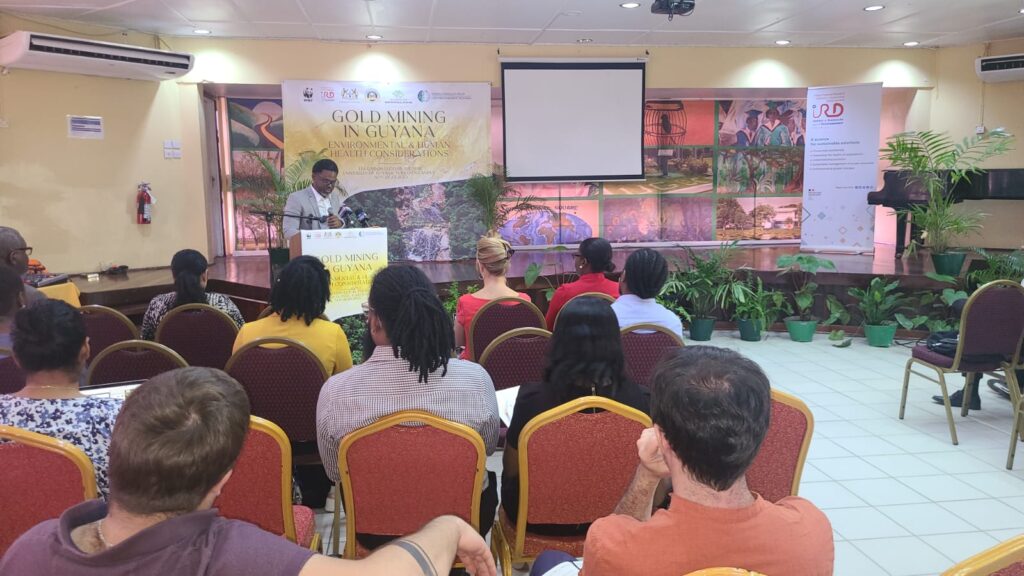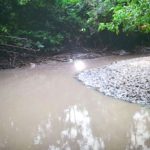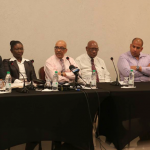
Guyana has seen a reduction in the importation of mercury for mining purposes, according to the Head of the Guyana Geology and Mines Commission (GGMC) Department of Environment and Guyana Focal Point for Minamata Convention, Darcy Waldron.
While speaking to reporters on the sidelines of the Gold Mining in Guyana Environmental and Human Health Considerations Conference at the University of Guyana today, Mr. Waldron explained that over the last two years, the country has seen a “significant” reduction in the importation of mercury.
“We have seen a gradual reduction in…I can’t give you the figures off hand but there has been a reduction, a significant reduction,” he said.
Waldron explained that prior to the reduction, there was a peak in importation of mercury owing to a common misconception that the Government under the Minamata Convention was moving to “eliminate” the use of mercury in the country’s Mining Sector.
The Minamata Convention is an international treaty designed to protect human health and the environment from emissions and releases of mercury and mercury compounds. Guyana signed on to the Minamata Convention in October 2013 and ratified it on September 2014.
According to Waldron, Guyana, under the convention, has committed to reduce or minimise the use of mercury where “feasible.”

He said to control the amount of mercury entering the country, the Government has put in place a cap. In August 2019, the Ministry of Natural Resources, the Environmental Protection Agency (EPA), GGMC and the Pesticides and Toxic Chemicals Control Board (PTCCB) signed a Memorandum of Understanding (MoU) agreeing to a cap being placed on the importation of mercury. Under the agreement, small and medium-scale gold miners are only to permitted to import 1,000 flasks or 34,500 kg of mercury per year.
“Now, we have a cap of how much mercury can come in within a year, and how much a miner or an importer can bring in. And, once you meet those limits, what we try to do also is to monitor to see where it is, to see if it is being reduced, and if it is not, then you can’t bring in any more other than that cap that has been given for that particular period,” Waldron said.
All importers, retailers, traders and distributors of mercury are also required to have Environmental Authorization from the EPA to engage in the sale or distribution of mercury.
“We have set up infrastructure where we even monitor the importation of mercury through a MOU with the Ministry of Natural Resources, the EPA, and the Pesticides and Toxic Chemicals Control Board and GGMC, where we basically track mercury into the country and where it is going and how it is being used in the industry. And, we are also doing research to ensure that releases are being reduced through mining practices, through encouragement, enforcement also education and awareness about the dangers and effects mercury can have on the environment,” he explained.
The Government has also been encouraging the use of mercury free technologies in the mining sector.
Waldron was among speakers at the Gold Mining Conference, which was organized by the University of Guyana, WWF, the Alliance for Responsible Mining and the French National Research Institute.











You must be logged in to post a comment Login